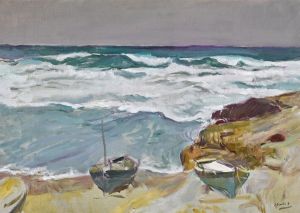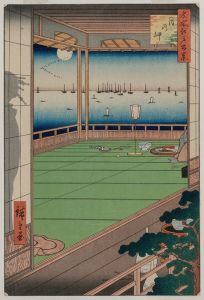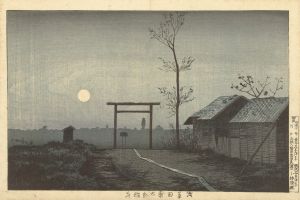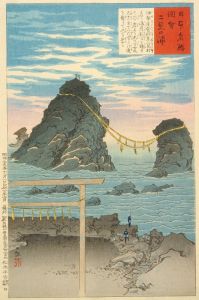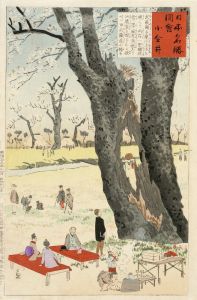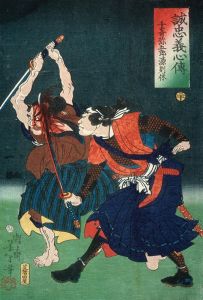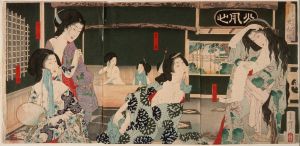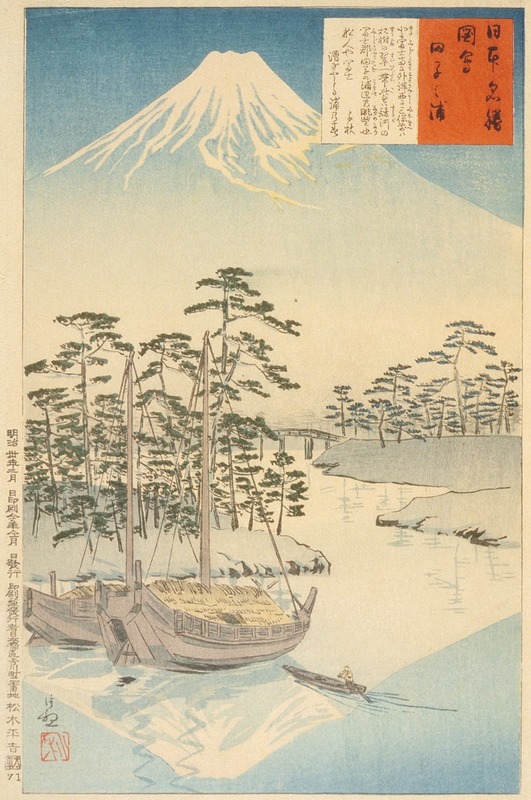
Tagonoura, near Fuji
A hand-painted replica of Kobayashi Kiyochika’s masterpiece Tagonoura, near Fuji, meticulously crafted by professional artists to capture the true essence of the original. Each piece is created with museum-quality canvas and rare mineral pigments, carefully painted by experienced artists with delicate brushstrokes and rich, layered colors to perfectly recreate the texture of the original artwork. Unlike machine-printed reproductions, this hand-painted version brings the painting to life, infused with the artist’s emotions and skill in every stroke. Whether for personal collection or home decoration, it instantly elevates the artistic atmosphere of any space.
Kobayashi Kiyochika (1847–1915) was a prominent Japanese artist known for his ukiyo-e woodblock prints and paintings, particularly those depicting landscapes, urban scenes, and historical events during the Meiji period. His works often reflect the rapid modernization and Westernization of Japan during this era, blending traditional Japanese artistic techniques with influences from Western art, such as the use of perspective and shading.
"Tagonoura, near Fuji" is one of Kiyochika's landscape works, showcasing his skill in capturing the natural beauty of Japan. Tagonoura is a coastal area located in Shizuoka Prefecture, near Mount Fuji, one of Japan's most iconic landmarks. The region has long been celebrated for its scenic views of Mount Fuji, often depicted in Japanese art and literature. In this artwork, Kiyochika portrays the serene and picturesque environment of Tagonoura, with Mount Fuji prominently featured in the background.
Kiyochika's landscapes are notable for their atmospheric quality, often emphasizing light, shadow, and mood. His works frequently depict scenes at dawn, dusk, or nighttime, creating a sense of tranquility and introspection. While specific details about the creation or context of "Tagonoura, near Fuji" are not widely documented, the piece is consistent with Kiyochika's broader artistic focus on capturing the changing landscapes of Japan during the Meiji period.
This artwork is part of Kiyochika's broader body of work, which includes a series of prints and paintings that document the transformation of Japan's cities and countryside during a time of significant cultural and technological change. His ability to merge traditional Japanese aesthetics with modern influences has earned him recognition as one of the most innovative artists of his time.
"Tagonoura, near Fuji" exemplifies Kiyochika's dedication to portraying the beauty of Japan's natural and cultural heritage while also reflecting the broader artistic trends of the Meiji era. Today, his works are appreciated for their historical and artistic significance, offering a window into a pivotal period in Japanese history.





